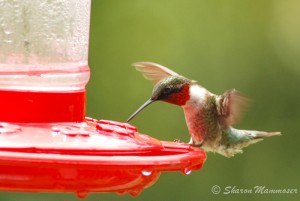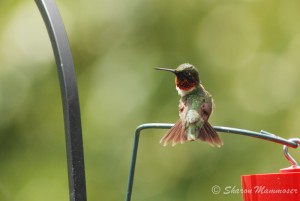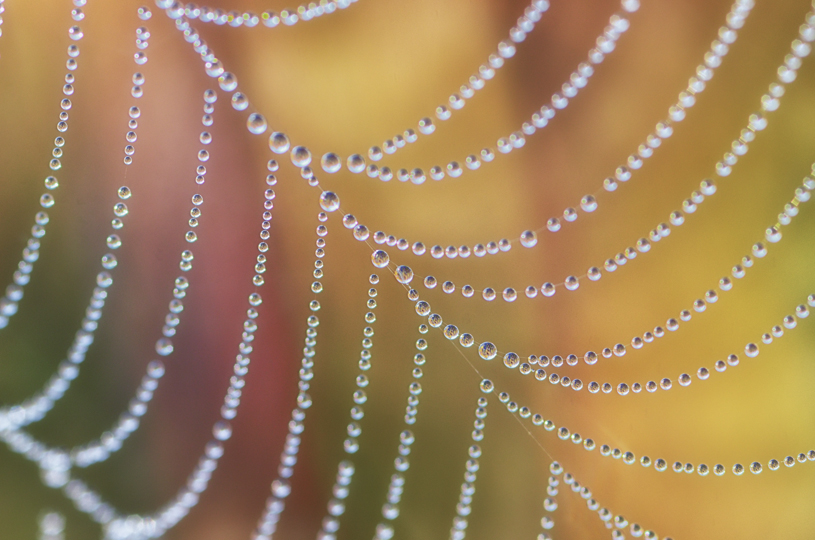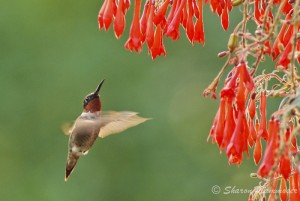
Like many nature lovers, I put out a hummingbird feeder –actually two–each spring and wait with childlike anticipation for the first visitor to arrive. From the right spot on my couch, with my back and front doors open, I can see both feeders and look up frequently as I work, hoping, hoping, hoping to see one hovering there by my meager offering. In North Carolina where I live that is usually sometime in early April, though I have not lived here long enough to be able to pinpoint the exact week. To be safe, I clean and hang the feeder plenty early, knowing the arriving males will be hungry from their long journeys.
When I feel the need to be inspired, all I have to do is watch a hummingbird for a few minutes. They are such marvels, with their tiny feathers and quick wings.
Seeing one at my feeder brings me such joy!
With the windows open, I almost always am alerted to their presence first by the buzzing sort of sound they sometimes make when they arrive at the feeder. I stop what I’m doing and look up to watch them, happy when they feel enough safe enough to sit on the perch and rest. With binoculars I can see their tiny feet and feathers, their long tongues extending at the end of their delicate-looking bills. They drink for a minute, then Zap! They’re gone in the blink of an eye.

In North Carolina, and in other eastern states, there is only one species of hummingbird regularly seen–that being the Ruby-Throated Hummingbird. That makes identification easy and you can impress your friends who don’t know much about birds by identifying one even though you only saw it for a millionth of a second. “Oh, there goes a ruby-throated hummingbird!”
“Wow! You must be a good birder!” they will say, not realizing how easy it is when there is only one choice. Identification between males and females is pretty straightforward– Males have a red throat patch that burns fiery red in the sun, shocking viewers who see it first in shadow or shade. Females lack this iridescent throat, but still are striking with their green backs and tiny size.
Hummingbirds have the highest metabolism of any vertebrate.
They lay the tiniest eggs– barely the size of a pea! When flying their wings can beat 60-80 times PER SECOND! On an average summer day they might visit 1200 flowers, feeding 5-8 times each hour. Their diet consists of nectar from flowers or feeders and insects and they are the only bird capable of flying forwards, backwards, in place and even upside-down!
What I think is most amazing about them though is their amazing migration.
Each fall they head south towards Mexico, traveling up to 2000 miles, including a 500 mile NON-STOP trip across the Gulf of Mexico.
Long ago people thought the tiny birds must hitch a ride on boats or other birds’ wings, but today we know the hummingbirds fatten up prior to their flight, then set out… and hopefully have enough energy to overcome the weather and other challenges.
Every time I see one, I feel lucky. And inspired. These tiny birds must overcome such obstacles on a daily basis!
To attract them to your yard, buy a special hummingbird feeder, sold at most any store that sells bird feeders. The best feeders are the ones that can be easily cleaned, with the top and bottom coming off to get inside. During the hot summer, mold grows quickly and is harmful to the birds, so regular cleaning is essential. Also, be sure and change the nectar often so it doesn’t ferment.
And speaking of the nectar–RED DYE IS NOT necessary, and many suspect it is actually harmful to the birds. Please don’t buy that Perky Pet red dye from the store!
Just mix up your own at home. All you need is sugar and water. Add 4 parts water to one part sugar. Mix the sugar in and store it in a pitcher in your fridge. That way, you’ll always be ready.


